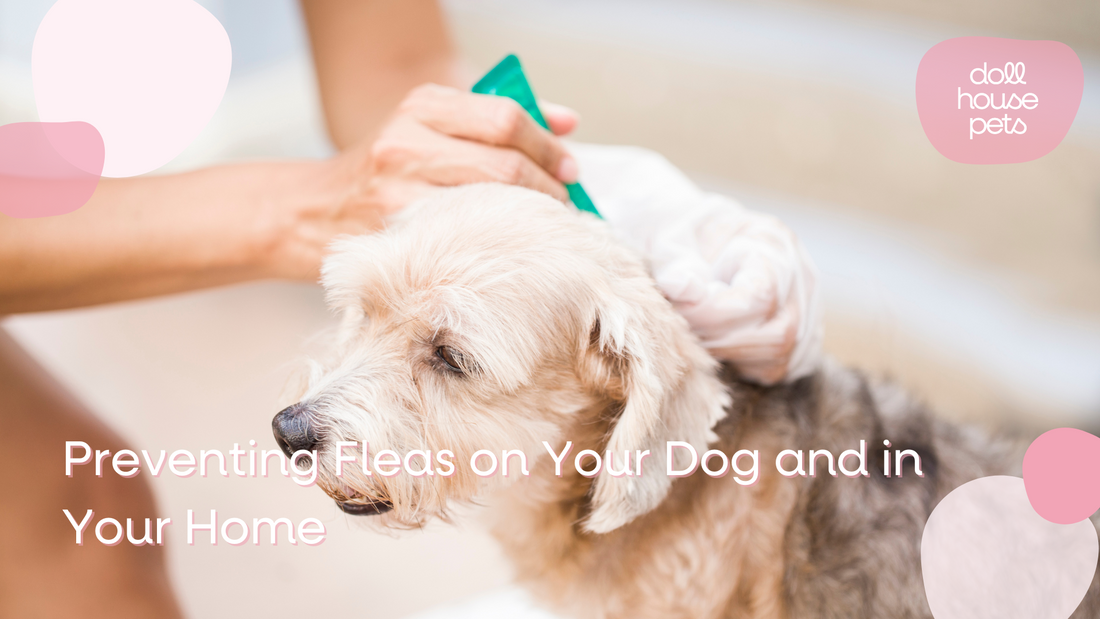
Preventing Fleas on Your Dog and In Your Home
At some stage of a pet's life, every pet owner will have to deal with the problem of fleas, ticks and mites. If left untreated, they can potentially transmit diseases and cause all sorts of skin problems in your pet! To prevent the problem from getting out of control, it’s best to treat your dog the moment you discover that fleas are beginning to make a home out of your dog’s skin and coat.
What are fleas?
Fleas, mites and ticks are parasites that feed off the blood of humans and animals. While they have a short lifespan of just 3 months, they reproduce very quickly. In fact, female fleas can lay up to 40 eggs a day! These tiny, oval-shaped eggs eventually hatch into larvae that burrow into your carpet, sofa or bed each time your dog shakes or scratches itself. The larvaethen form cocoons during the pupae stage and emerge as adult fleas. These maddening pests simply love an environment that is warm and humid so the weather in Singapore makes for a perfect breeding condition for fleas to multiply!
It is a common misconception that a flea infestation only occurs on dirty animals when inactuality, an infestation is more common in clean animals. So be sure to keep a watchful eyeout for these pests.
Symptoms of a flea infestation
The most crucial thing is to catch the problem early! With how quickly fleas multiply, spotting just a couple fleas on your pet poses a major problem that should be nipped in the bud immediately. This means brushing your dog and inspecting its coat often. While regular grooming may not prevent the infestation of fleas, this gives you the opportunity to spot the symptoms of an infestation sooner rather than later so that you can seek treatment as quickly as possible.
Fleas, ticks and mites are tiny black or brown crawling creatures that can look like dirt. Apart from inspecting your dog’s coat for flea dirt and flea, examine the fur under your pet’s ears and limbs too since such pests dislike light. Make sure to also check your carpets, drapes and your dog’s bedding for signs of fleas too. If the fleas are difficult to spot, try combing through your dog’s fur onto a bright surface, like a piece of damp tissue paper. If it’s flea dirt (which is actually flea droppings), you’ll notice that the specks will turn red upon touching the moist tissue because of the digested blood they contain.
Some other symptoms of a flea infestation are if your dog scratches or bites at its fur, the appearance of scabs and red, irritated skin and even hair loss.
Treating your dog for fleas
Instead of heading to the pet store to buy expensive over-the-counter treatments, sprays or dips, seek professional help right away. It will save you time! Your vet should assess the severity of the infestation to prescribe oral treatments, provide you with some pamphlets or handouts about flea control and advise the best preventative for your dog.
Should you choose to purchase flea treatments on your own, you will need to read the labelscarefully to check that you are not inadvertently poisoning your pet! Never allow your pet to ingest any of the products you use; they are highly poisonous. It's also important to protect their eyes from these harsh chemicals. Flea collars could be an option too, but there has been a lot of disagreement about whether or not flea collars work. They tend to kill fleas in a localised area around the collar. But when in doubt, always consult your vet.
Getting rid of fleas in your home
A flea infestation does not begin and end with your dog. Fleas can overrun your home too by making themselves comfortable in your home furniture, rugs and bedding. Any flea treatments will be pointless if the flea's eggs or fleas themselves remain in your living space, and this is why getting rid of fleas in your home is paramount.
To clean your home properly, you will need to sanitise and clean the areas where your pet sleeps. Often, just washing the flea-infested bedding in hot water and some flea shampoo should do the trick. But if it’s too severe, you may even need to throw away blankets that have become infested with flea eggs.
We hope this guide has been handy in helping you identify the beginnings of a flea infestation as well as how you can treat and prevent it. Prevention is always better than cure, so make a conscious effort to check your pet every day for fleas and use preventative treatments approved by your vet!
During Check-in at Dollhouse Pets, our Pet Stylists will conduct a pre-grooming health assessment on your pet's skin and coat. If your pet is infected with fleas, we have Flea Treatments to rid the fleas of your pet!



